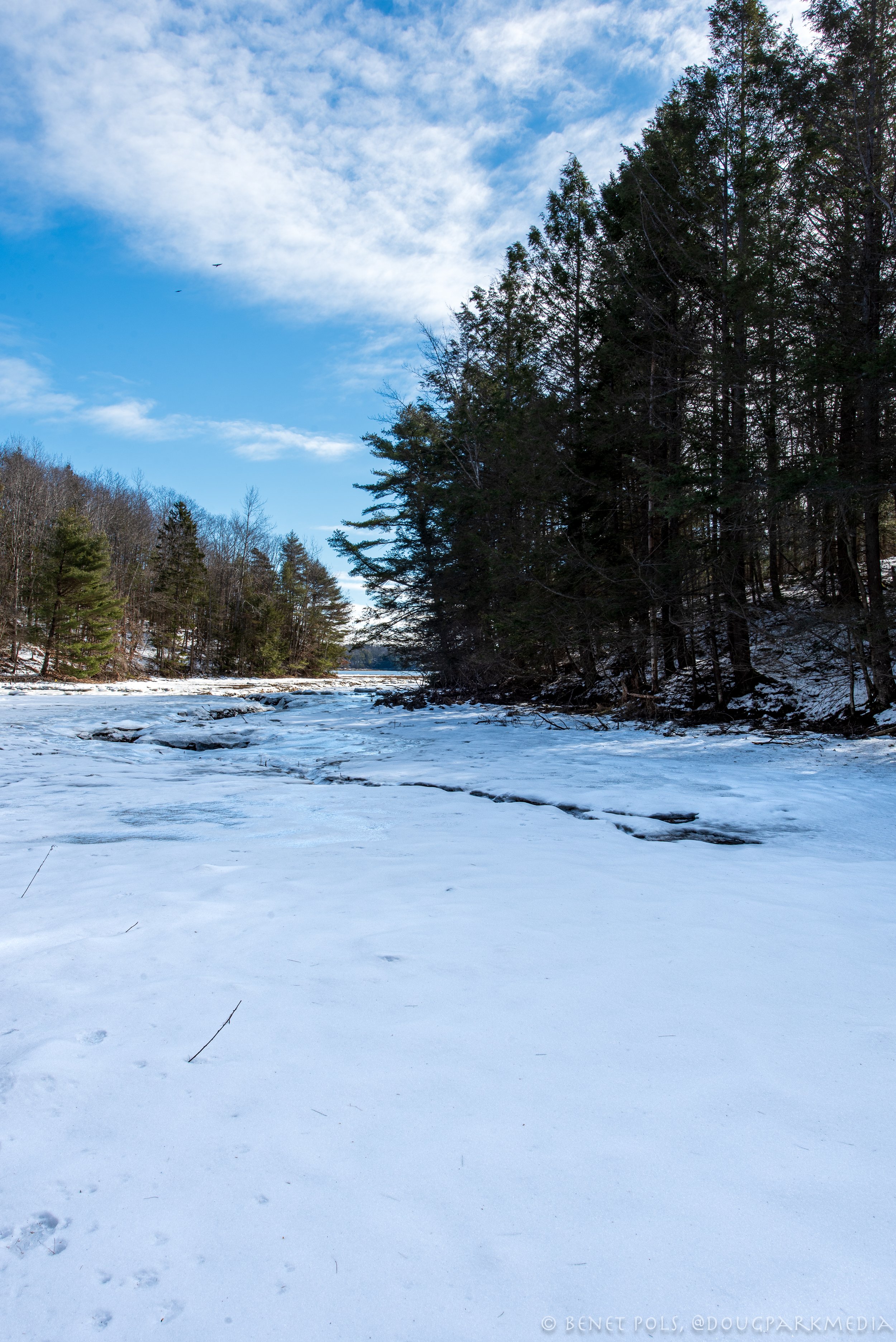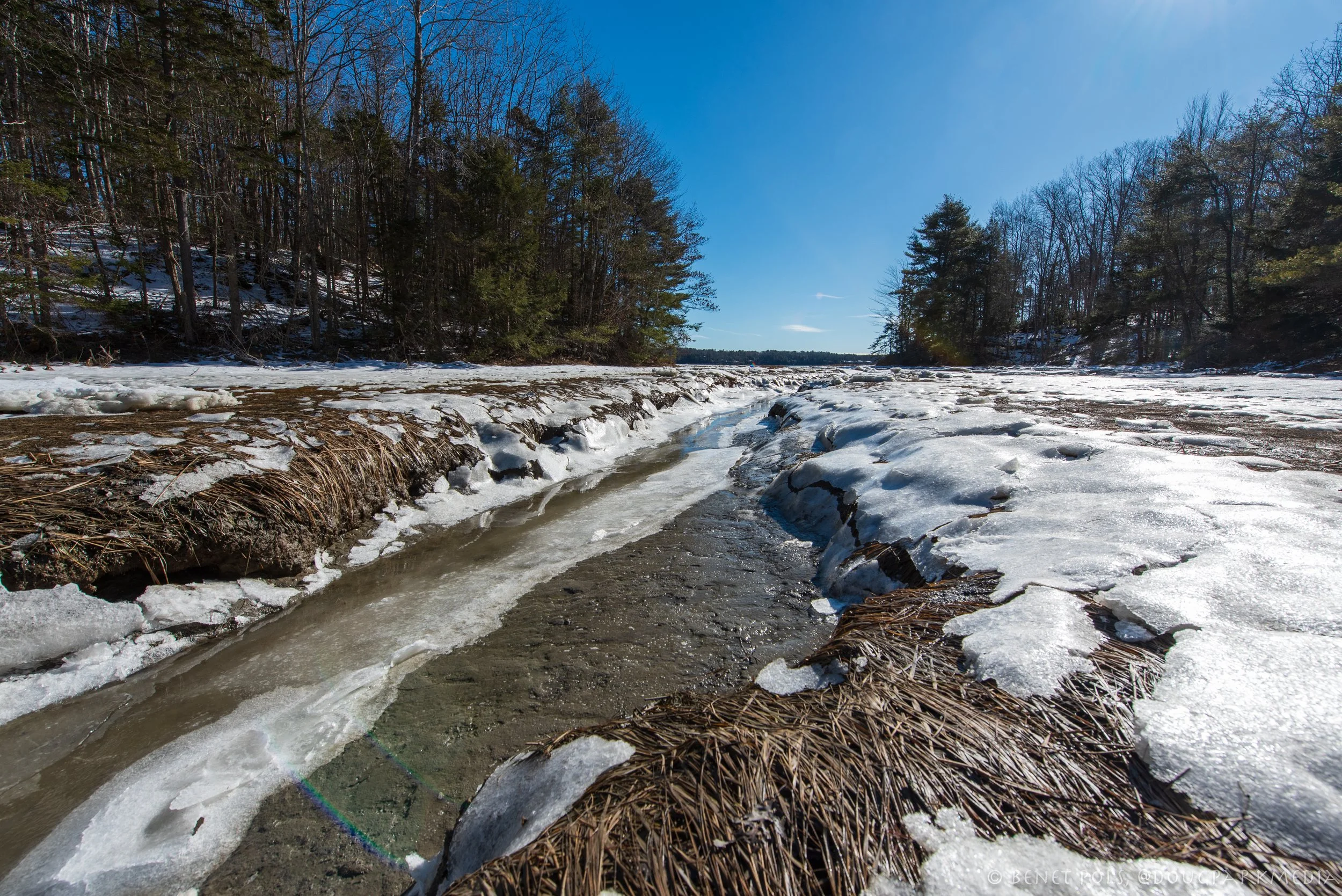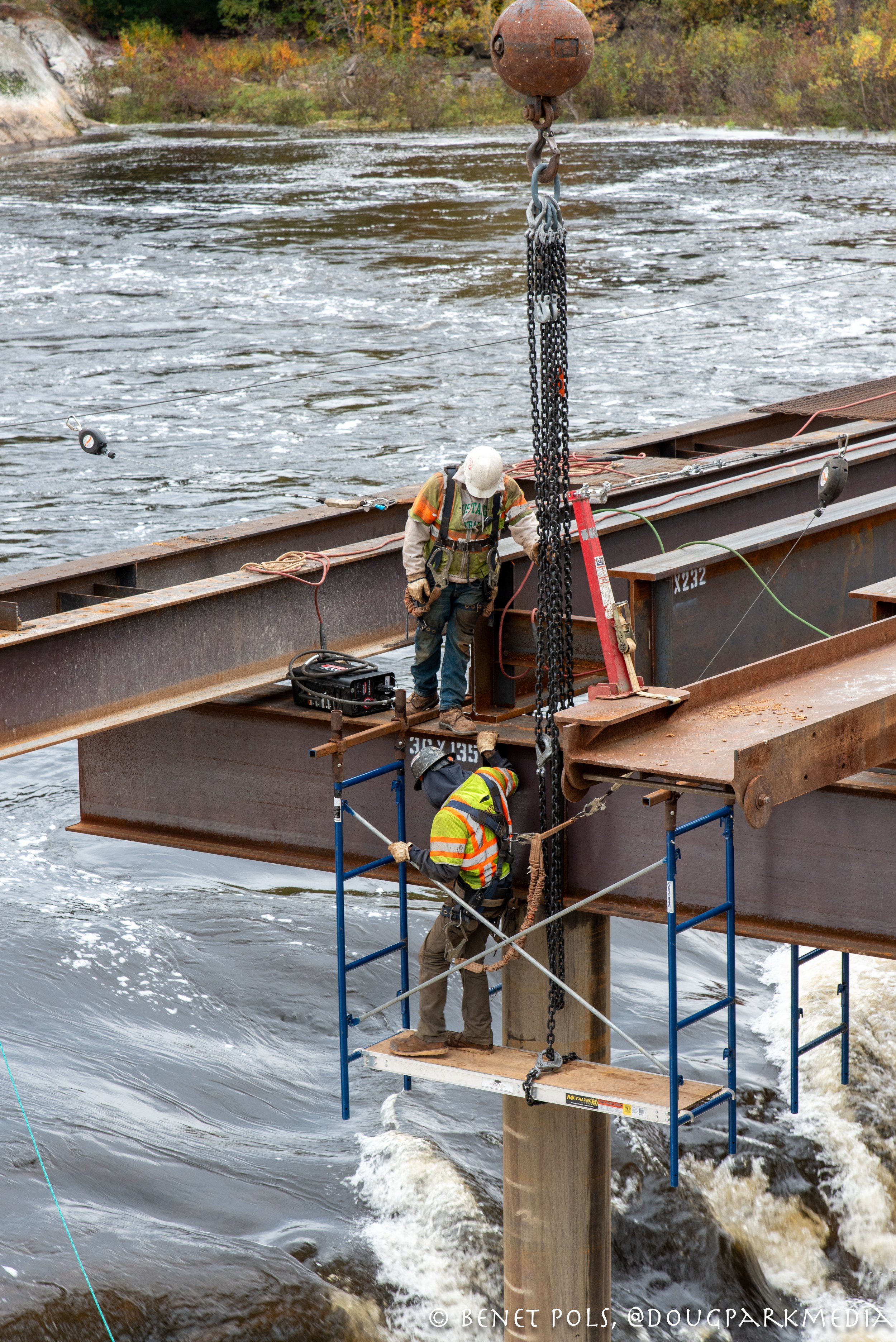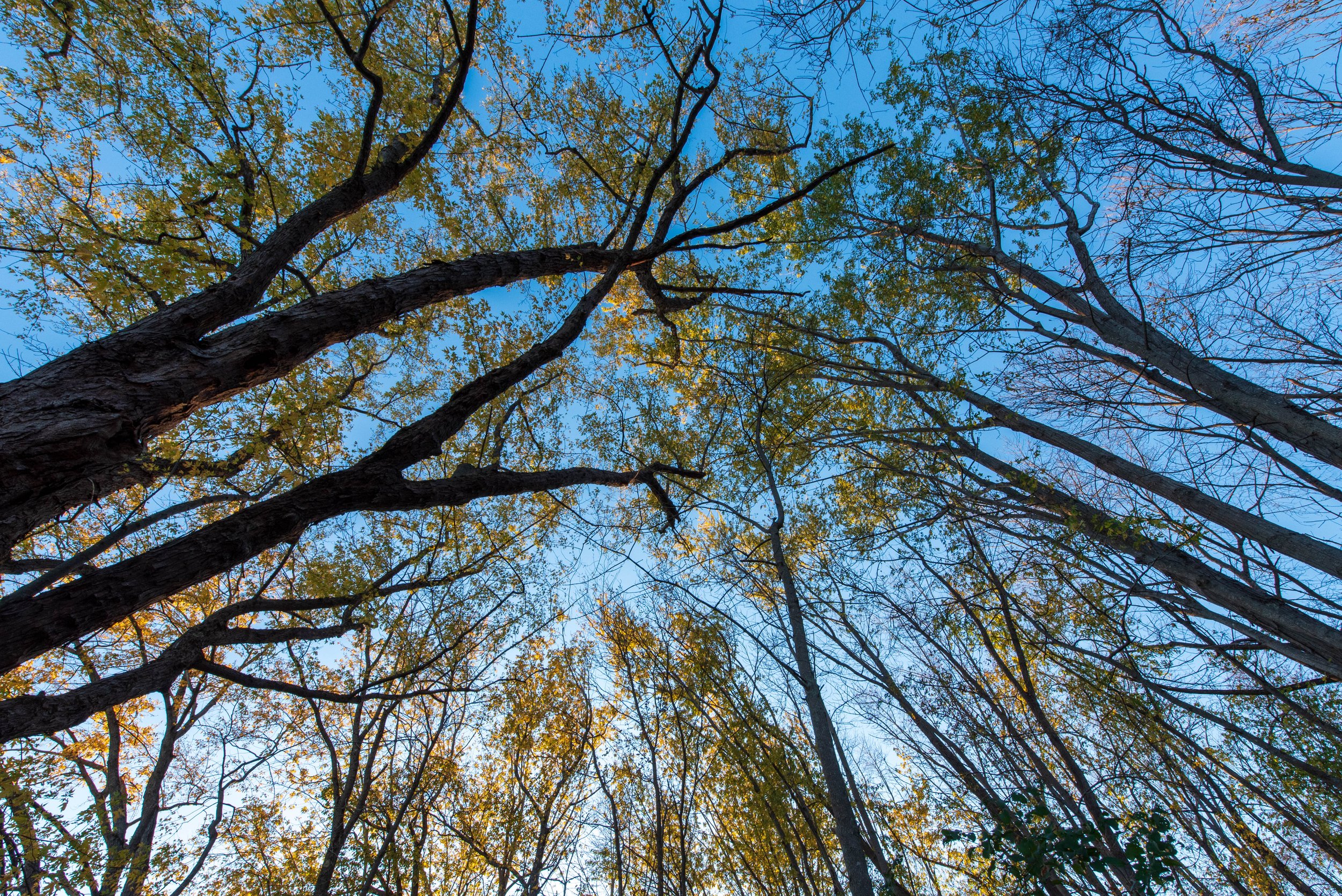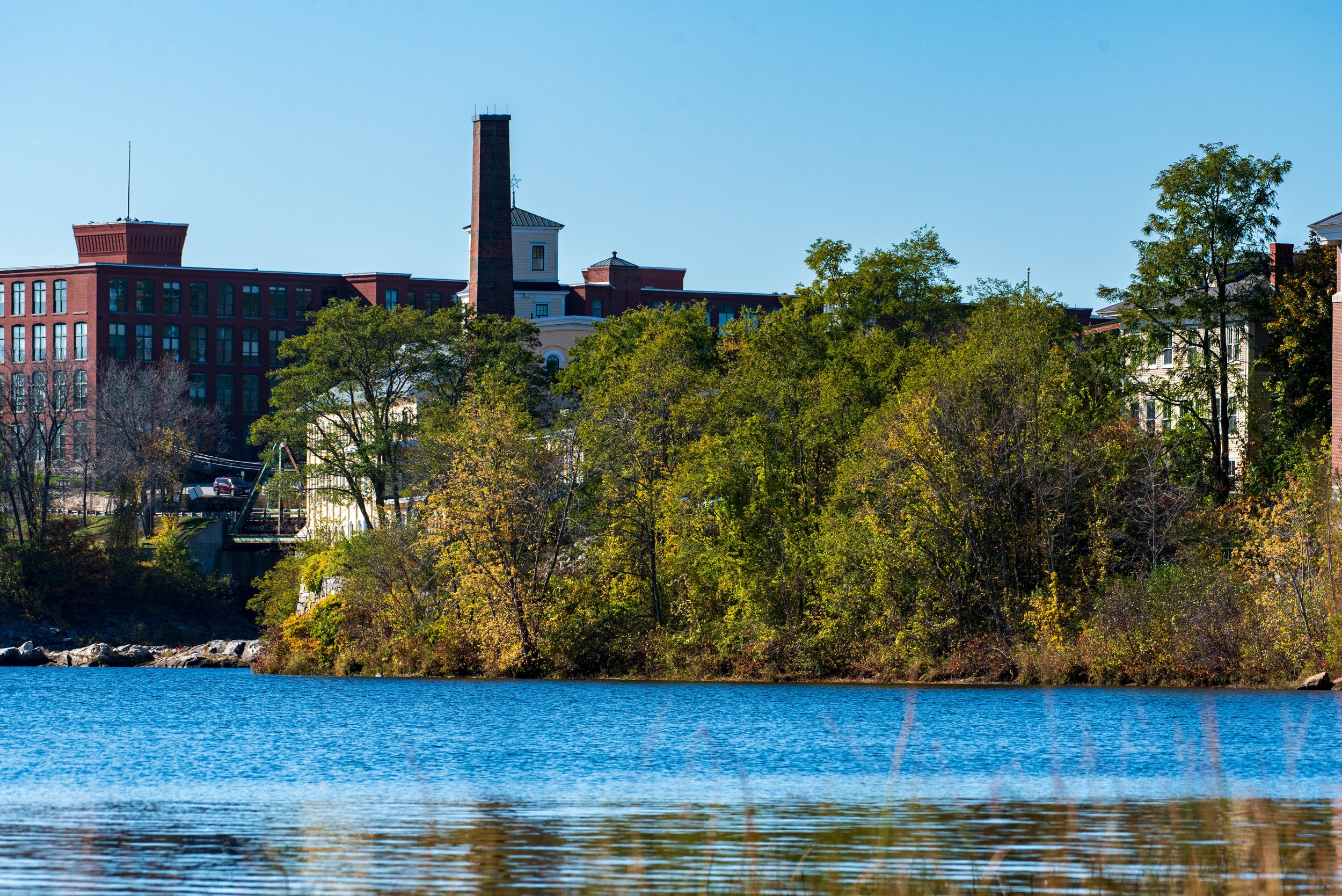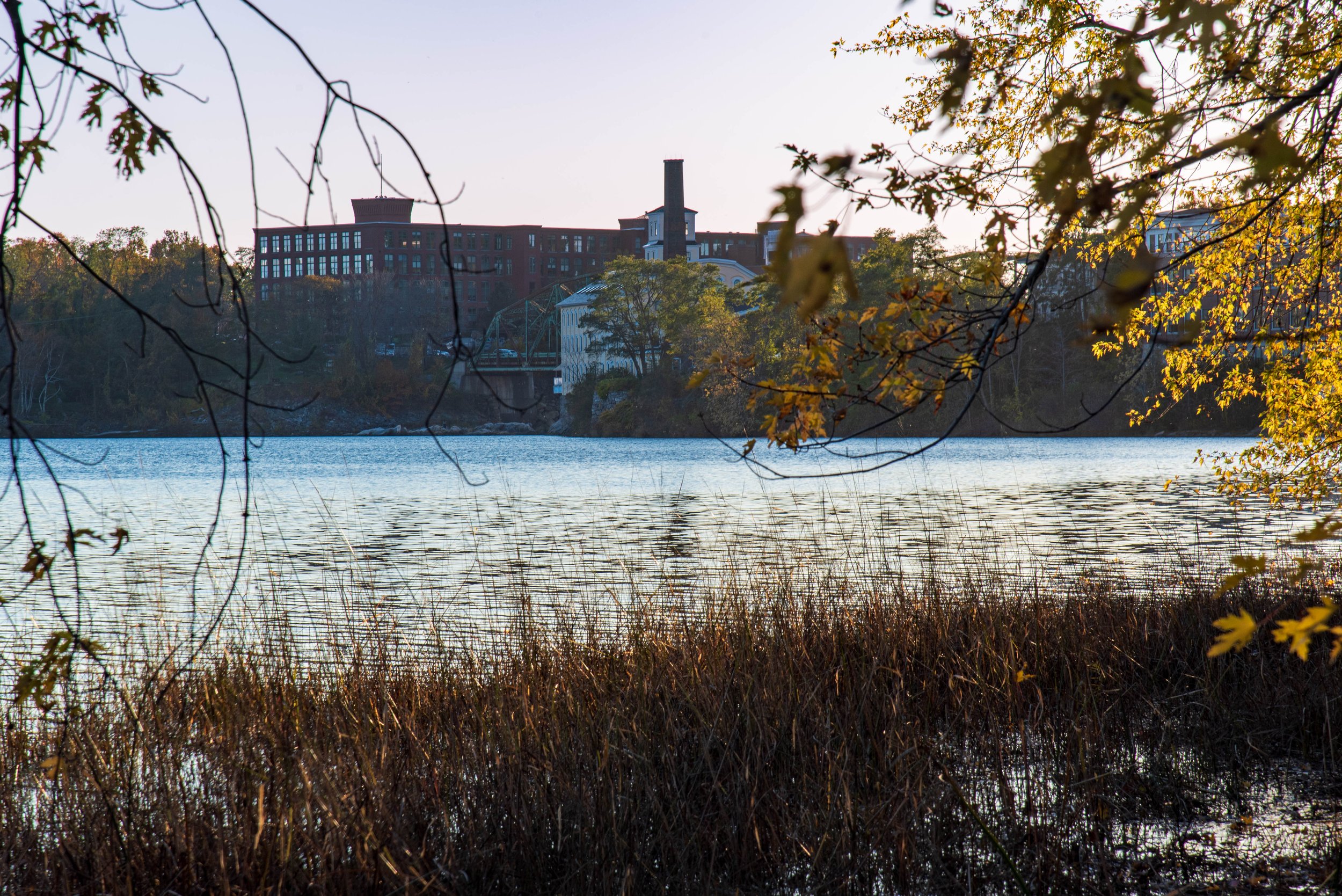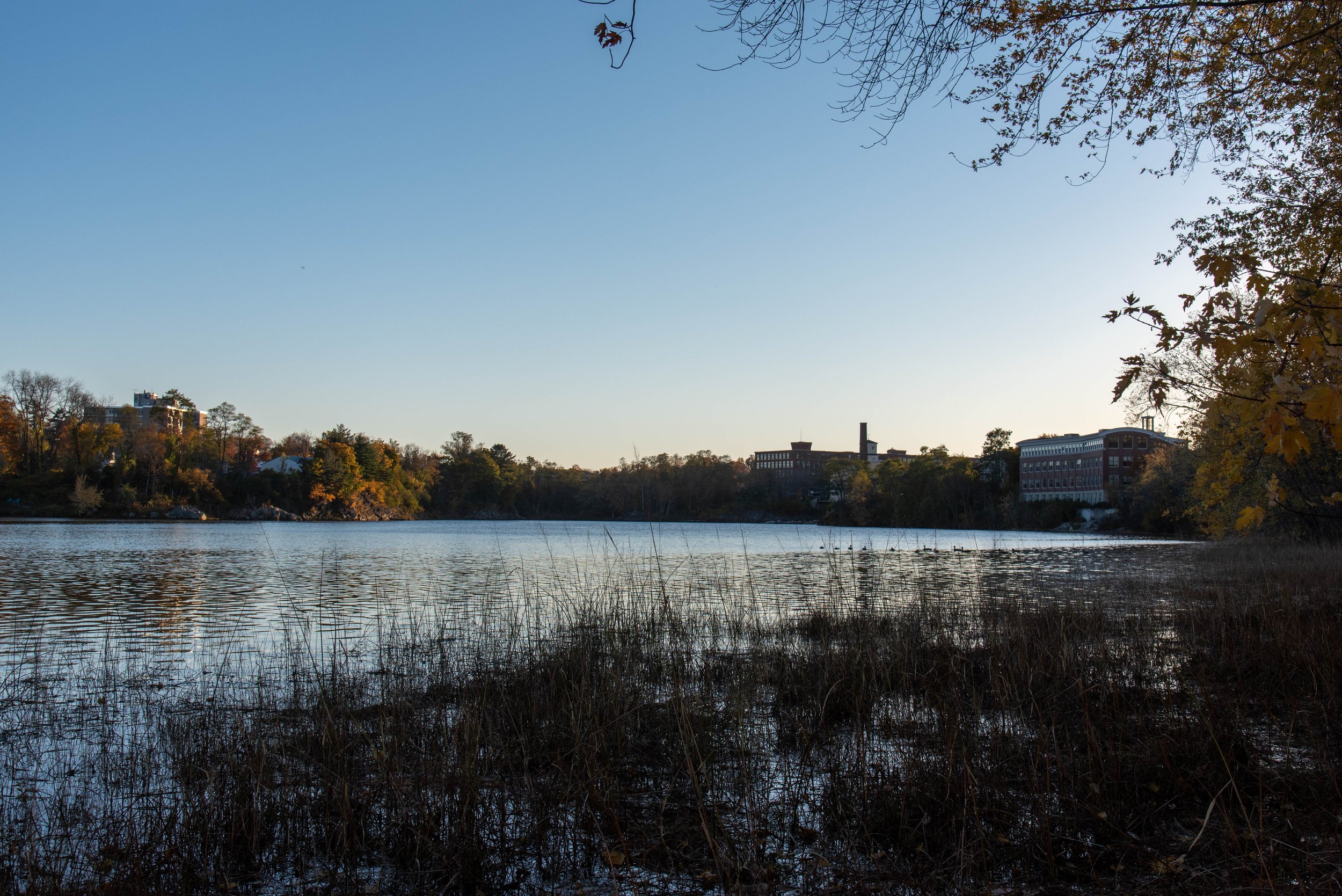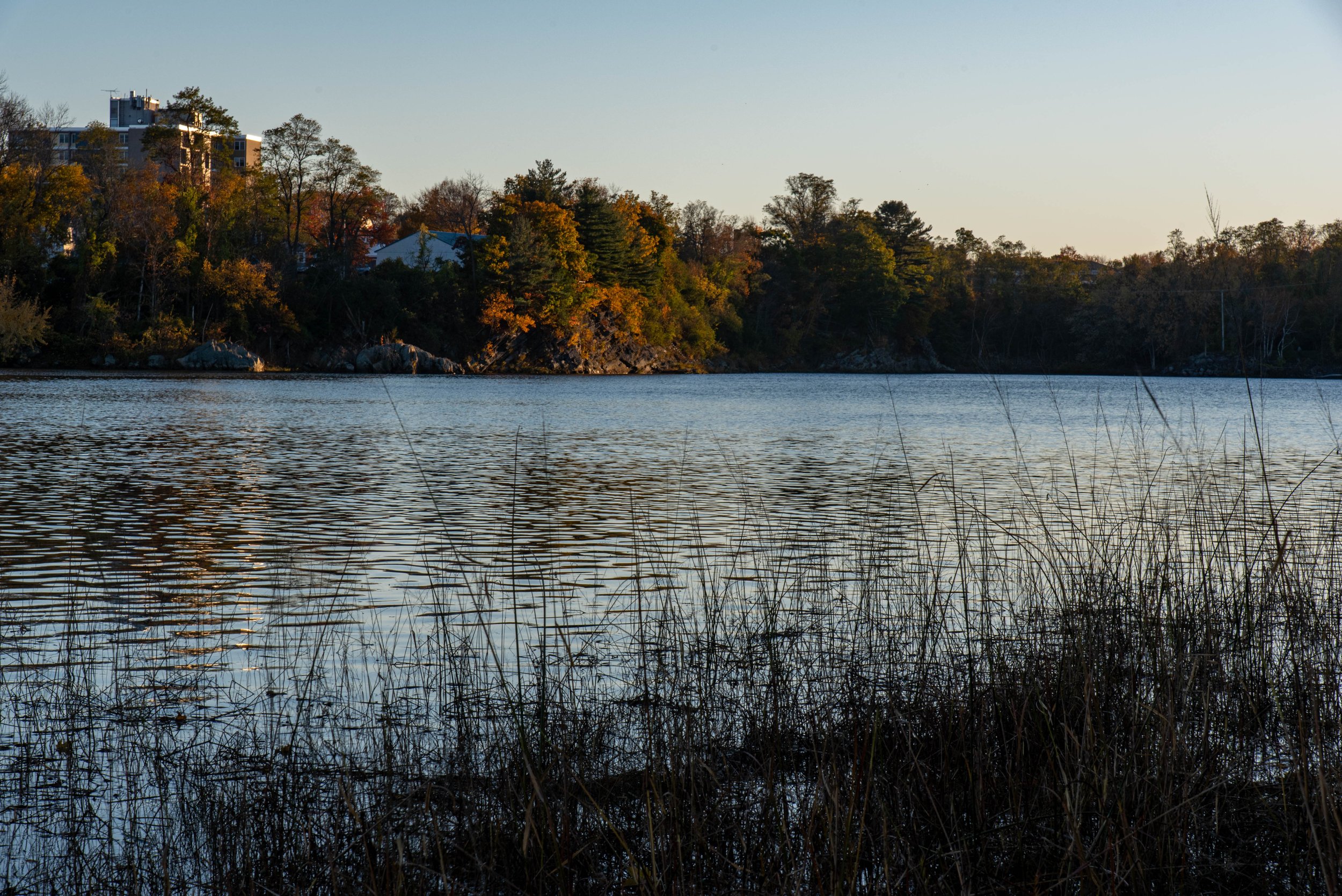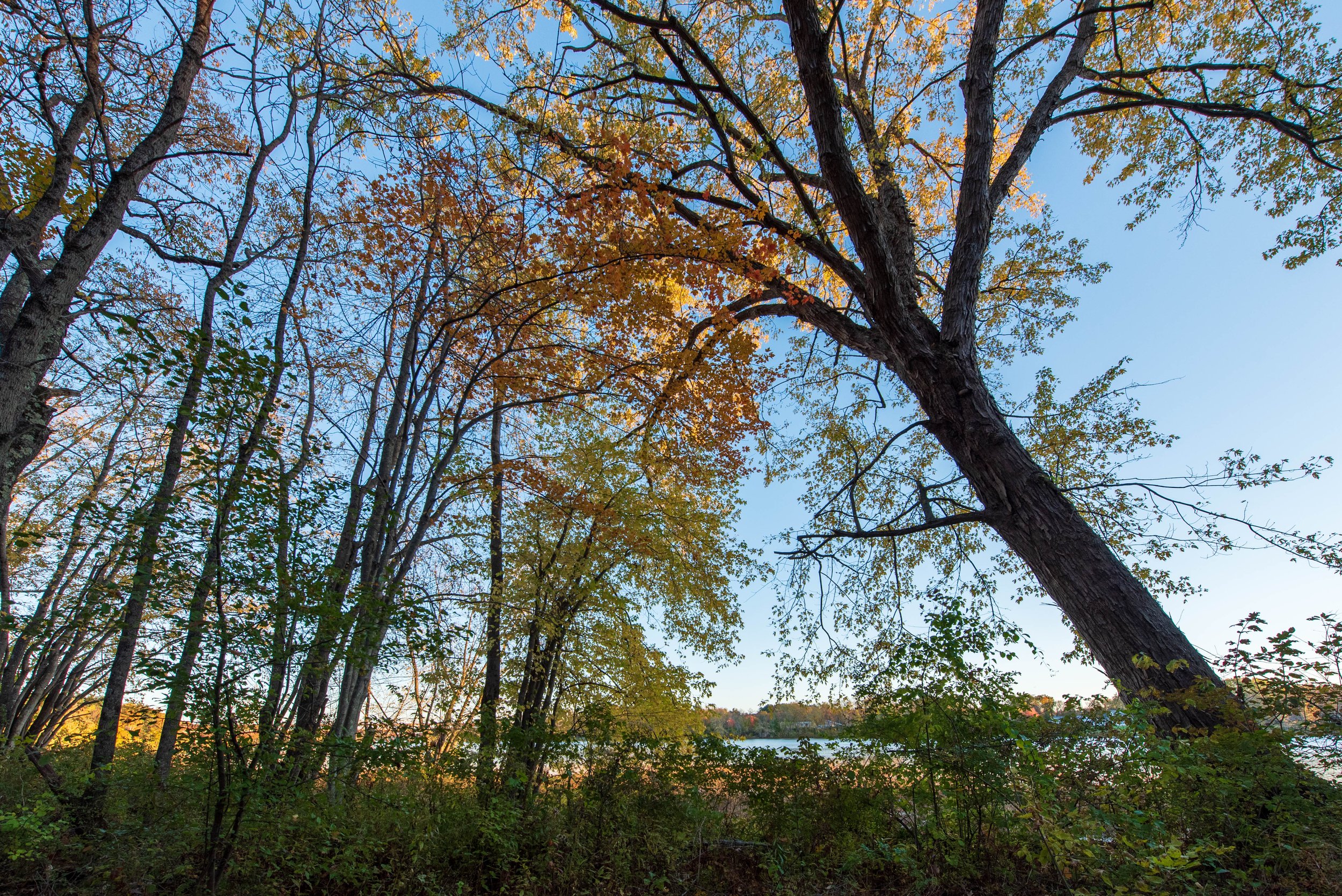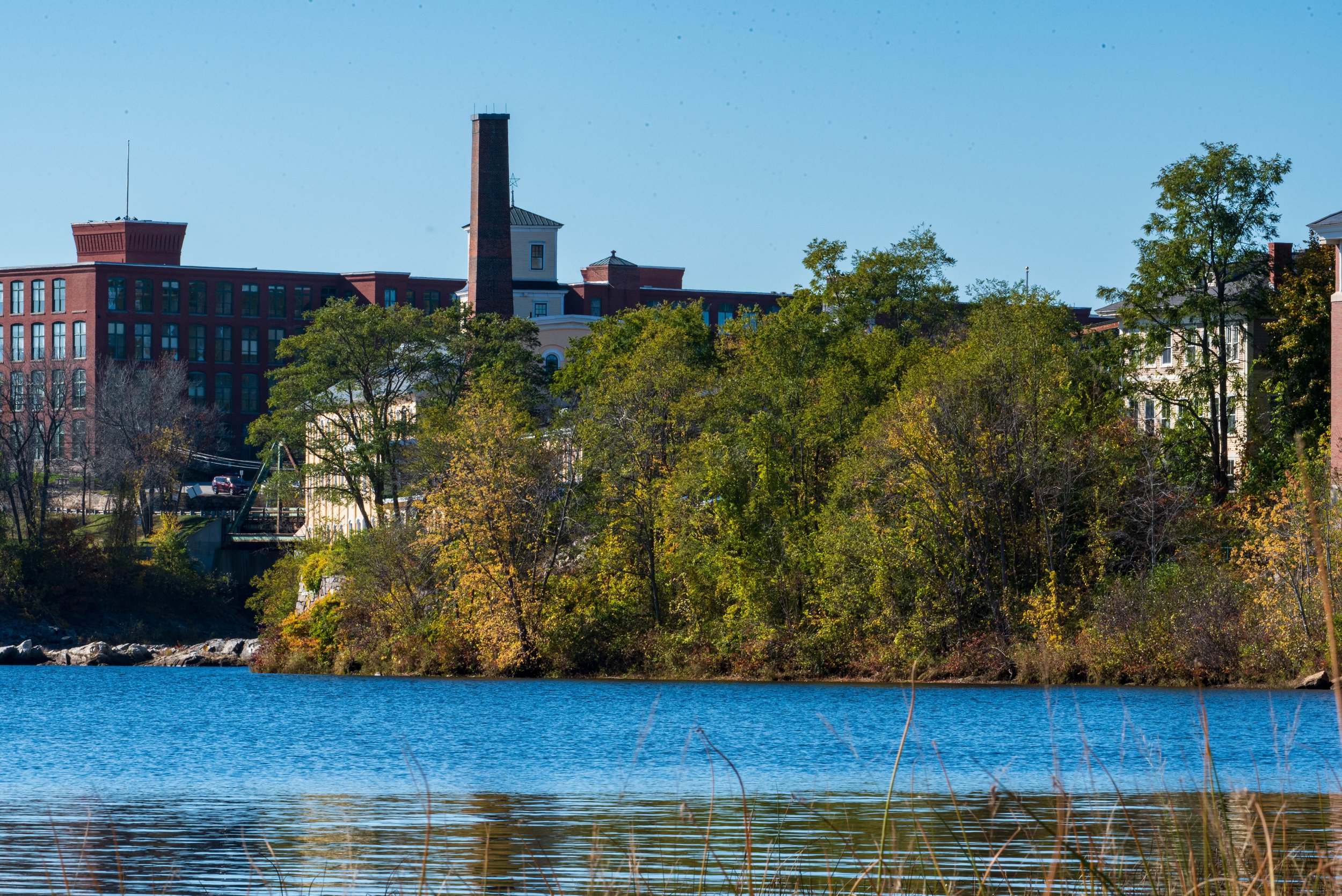With the lack of snow limiting the opportunities for cross country skiing and snow shoeing, plodding along the shore line and exploring stream beds is a diversion.
It has been cold enough so trails have retained the veneer ice and packed glistening snow that results from the freeze and melt cycle. The hardtack produced by passing hikers makes the trails treacherous for some.
A great example of this is the path at the Maquoit Conservation Land . With just a straight out and back and little fresh snow to rejuvenate the path the footing leads to a mincing pantomime of a penguin. One solution, if you’re up for it, is to do a little bushwhacking, and get down to the adjacent stream beds.
Just to the west of the trail (on your right as you head toward the bay), which runs pretty close to the western boundary of the property is a stream that marks the boundary between the the western side of the property and an adjacent private landowner. However, to the east (on your left as you head toward the bay) are two streams that are contained within the boundaries of the property. With frozen embankments and reeds laid flat by the scant snow cover, it is a fairly easy walk back up the stream to points where it narrows enough to be stepped over and allow you back down the other side. You’ll get to see an area that is difficult or even unpleasant to get to other times of the year when leafy underbrush obscures lines of sight, the sucking mud has thawed, footing is brutal, and sensitivity to the plant life might make walking over it seem like walking through your neighbor’s flower bed. Also insects.
But in winter, an overcast day is as fine as a sunny day.
You’ll find that the major streams are joined here and again by smaller streams—so far as I can tell none of them have names that have made it onto any maps—these smaller streams offer some choice and diversions along with the brief sense that you are alone in the woods.
Moving horizontally up the banks and over the ridges that separate the streams you will see the woods doing their regenerative thing recovering from blow down of years past.
Commonly called rare clubmoss, ground pine, or princess pine, which is what I have heard it called. It is a North American species of clubmoss in the family Lycopodiaceae. Native to the eastern US and southeastern Canada from Georgia to Minnesota to Nova Scotia, it grows in the understory of temperate coniferous and deciduous forests where it is involved in seral secondary succession some years after disturbance has occurred.
It is known for the superficial resemblance to various conifers, hence the names ground pine or princess pine. However, its above-ground parts are rarely more than six inches tall. Its main stem is actually an underground creeping rhizome which grows about two and half inches below ground
Historically, princess pine has been harvested from the wild for use as Christmas greens for wreaths, as well as the use of its spores for flash powder, a product that is now practically obsolete, The harvesting had caused it to become threatened in several areas, leading Indiana[ and New York to declare it protected by state law.
